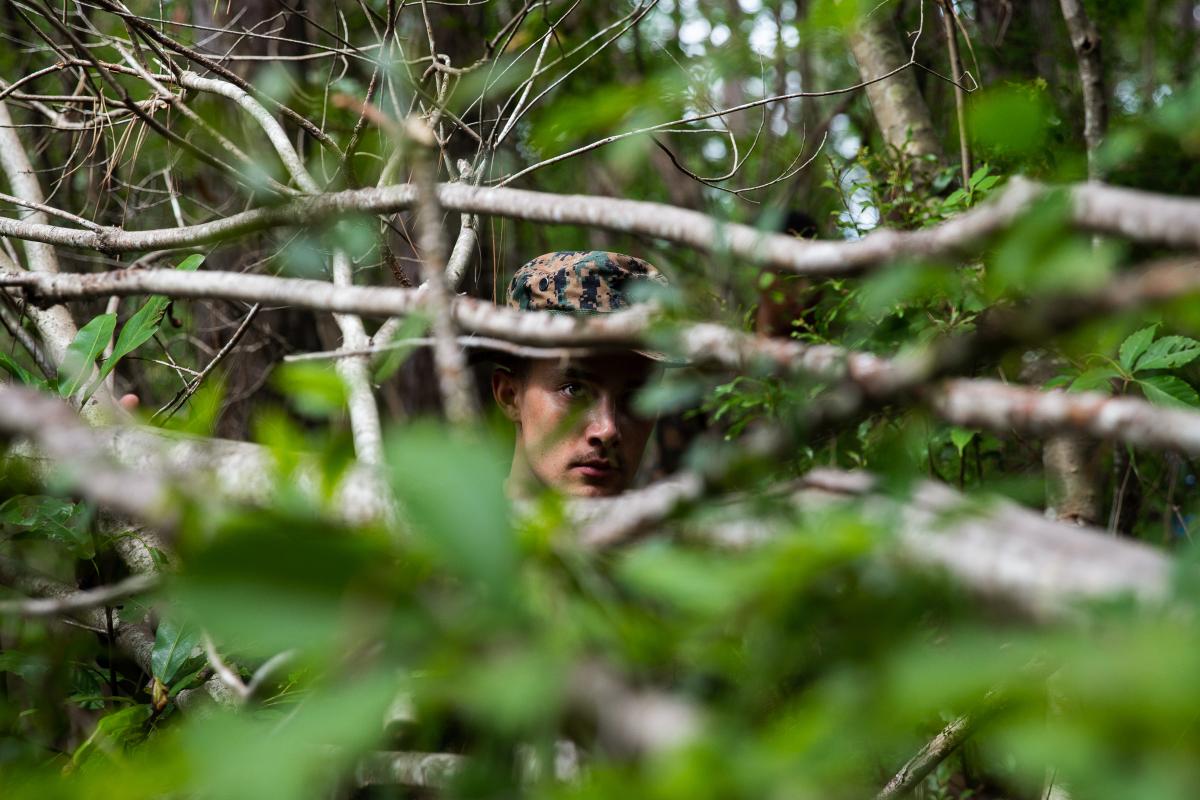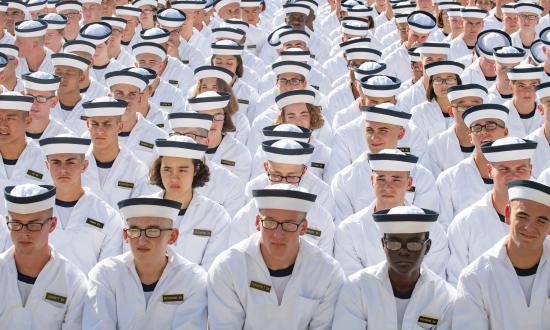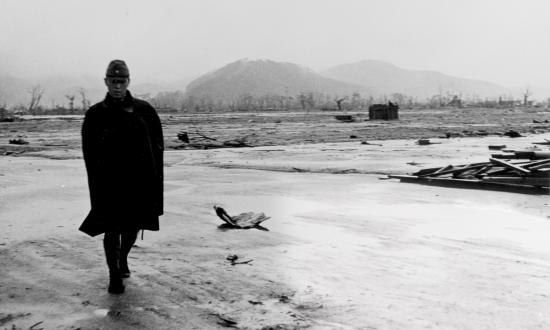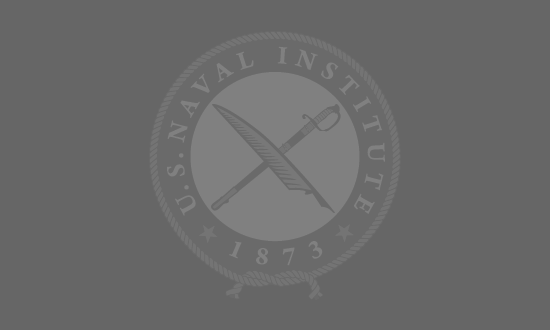When Rutgers University decided to fully remote in Spring 2020, it meant that I—a midshipman in the Rutgers/Princeton Naval Reserve Officers Training Corps (NROTC) detachment—gained an unprecedented amount of flexibility to choose when and where I attended my college courses. I felt a responsibility to make use of this unusual circumstance to replace the training I would lose while not on campus. With that in mind, I approached the Marine Corps members of the NROTC staff with a proposition: If I could take my classes from anywhere, then perhaps I could use this flexibility to train in ways I could not under ordinary circumstances, when attendance on campus was required. Unit leaders were incredibly supportive, and we reached an agreement that if I could find a training course willing to take me on as a student, then they would do what they could to make it happen. I knew what course I wanted: Combat Hunter School, which I first learned about while reading General James Mattis’ book Call Sign Chaos (Penguin Random House, 2019). The course teaches Marines to read their surroundings and make swift tactical decisions in dynamic situations. With my limited exposure to the tactical side of the Marine Corps, this course seemed likely to help me become a sounder, more proficient future combat leader.
Staff Sergeant Nathaniel Theocles, the school’s senior noncommissioned officer in charge and an accomplished tracker, was very helpful in obtaining approval for me to attend. He offered solid guidance on how to prepare and what to read, and I assembled a list of publications to ensure I would arrive with a foundation in the skills required for this advanced school. A crucial part of my agreement with the NROTC unit was that, if I attended this course, my academics would not slip. Understanding this, I used the weeks leading up to my departure for Camp Geiger, North Carolina, to plan what assignments I could complete ahead of time.
Combat Hunter School is run by the Advanced Infantry Training Battalion. The skills it teaches fall under three pillars: observation, tracking, and combat profiling. Each plays into the desired end-state of the course: “to produce a more ethically minded, tactically cunning and lethal Marine better prepared to succeed across the Range of Military Operations.” In essence, Combat Hunter is a mind-set. It is the practice of taking a proactive stance against the enemy, who intends to deceive you at every turn, rather than a reactive one. This embodies the words General Mattis wrote to his Marines before the invasion of Iraq in 2003: “Engage your mind before you engage your weapon.”
The Combat Hunter intermediate course takes Marines from across the fleet and teaches them Combat Hunter doctrine over the course of one week. The trainer course instructs Marines on these same skills, but in more detailed degree and emphasizing how to pass these skills on to others after returning to the fleet. The larger goal is to foster a culture within the Marine Corps of always seeking to be “left of bang”— in other words, to intercept the enemy before he chooses the ground on which to fight.
I arrived a little nervous, but eager to learn. I was unsure how classmates who had already earned their place as Marines would receive me, a title I had not (and have not) yet earned. Much to my relief, the Marines in my class welcomed me—infantry, air wing, amtracks, military police, and combat engineers; every Marine present understood my desire to learn so I may better serve. Throughout the three weeks, the Combat Hunter instructors taught me much, but so did these fleet Marines, and I took in as much as I could from their hard-earned experience.
Observation. The lessons each day were designed to build on one another. You cannot track if you cannot first efficiently observe and establish a baseline. This is where I found the steepest learning curve. We would regularly conduct observation exercises with and without binoculars to develop mental images of how possible threats look when interwoven with the natural environment. The instructors refer to these images as “file folders.” My classmates already had some familiarity with identifying foreign weapons from their time in the operating forces, but I lacked this skill. Even many civilians can identify an AK-47 from its profile, but one pointed straight at you hiding among the brush is much harder to notice or recognize. With the help of the passionate and knowledgeable instructors, I began to develop file folders and could soon identify many threats. Something as simple as recognizing the body positioning of a subject at 400 meters could reveal if he or she posed a danger. For example, a threatening person holding a rifle will usually have their arms outstretched perpendicular to the body; but, when aiming an RPG, the threat will usually have his or her arms in close and vertical, bracing the weapon against the chest and shoulder in preparation for firing. Small details such as these began to fill my file folders.
Tracking. Armed with the knowledge of how to properly observe, we could begin tracking. As a complete novice to hunting, my pop-culture-based expectations of tracking included sniffing dirt and being able to immediately determine any number of facts about my quarry from that. In reality, tracking is a blend of gut-driven art and tedious science. While tracking is generally associated with actively pursuing your quarry, even gathering evidence from a trackline that has gone cold can prove instrumental in generating useful intelligence. A size, activity, location, unit, time, and equipment (SALUTE) report is usually given when the enemy is under visual observation. However, a trained combat hunter can provide similar information strictly from what the enemy leaves behind. The number and shape of tracks, the outline of weapons in the dirt at ambush sites, and the evidence left by patrols can all contribute. Before I received instruction in observation and identifying foreign weapons, I would likely have missed a PKM cartridge belt left behind after an enemy ambush. PKM belts are reusable (unlike U.S. machine guns, which primarily use disintegrating links) often leading forces that employ Soviet-patterned light machine guns to retain spent belts. Crucial pieces of evidence such as these can be relayed back to commanders to help build a better profile of the enemy nearby: They are armed with light machine guns, but they may not be well-trained, because they lacked the discipline to recover their equipment.
Tracking can even help determine the tactical proficiency of an enemy unit. Forward and backward footprints have distinct characteristics; therefore, when observing a trackline, a combat hunter will be able to see if the quarry reverses direction every few feet while walking. Walking backward every few steps is standard procedure when patrolling. Tracks that show this point to the quarry having some level of military training. Again, this kind of information can help commanders and adjacent units understand key questions such as the experience level of the adversary: Are we dealing with raw or poorly trained local militia? Are they seasoned fighters, possibly even professional foreign troops attempting to influence our area of operations? In an age when battles increasingly depend on information dominance, the skills honed at Combat Hunter School hinders the enemy’s ability to deceive and equips small unit leaders with the skills necessary to disrupt the enemy planning cycle.
Combat Profiling. Just as tracking involves finding anomalies in the baseline of nature, combat profiling seeks anomalies in human behavior to find indications of a person’s true motives and affiliations. When the enemy seeks to hide among a civilian populace, whether for the sake of espionage or irregular warfare, the ability to read human terrain becomes essential in identifying persons of interest, possible threats, and local power dynamics.
Combat profiling combines trained observation skills with the ability to identify anomalies in a baseline refined through tracking. To create the “bias for action” that the Marine Corps demands of its leaders, combat hunters follow a “rule of three” in profiling. Marines are taught to consider six profiling domains—among them, involuntary reactions (such as sweating and heavy breathing), a subject's spatial relationship to other groups, and even the relationship to physical dwellings. If an individual demonstrates an anomaly in three of the domains, one of four possible actions must be taken: Kill, capture, make contact, or leave it alone.
This is not to say action cannot be taken before three anomalies are found. If an individual draws a weapon at you, you need not worry if he or she is sweating before acting. Instead, the rule of three encourages a Marine to study the environment and helps describe what makes a person stand out. Then it demands the Marine make a decision based on that information.
Combat Hunter School emphasizes Air Force Colonel John Boyd’s famed OODA Loop decision-making process. The ability to observe (take in information from the environment and establish a baseline); orient (turn that information into understanding, apply it to your current baseline, objectives, and procedures); decide (use the rule of three to formulate a response), and act (engage your bias for action to carry out the appropriate response guided by the four possible courses of action) drives every skill a combat hunter employs.
The Marine Corps martial arts program teaches more than kicks and blocks—it fosters the warrior ethos. Similarly, Combat Hunter School is more than tangible skills such as tracking—it is a mind-set. The hunter’s mind-set, much like the warrior ethos, transcends missions and military occupational specialty. It sharpens Marines in every environment and equips them with the initiative to seek out the enemy instead of waiting to react to contact.
Combat Hunter School provided me vital skills toward my goal of one day leading Marines. Combat Hunter School equips its graduates with the ability to articulate clearly to others how the environment gives them insight to the battlespace. This is crucial for young officers in the Marine Corps, who are tasked with the ability to communicate both up and down the chain of command efficiently. I feel incredibly lucky to have been given the opportunity to learn from experts in their field and to be around the Marines who mentored me throughout my time at Combat Hunter School. My goal is to pass on the knowledge entrusted to me to the midshipmen of my unit and to the Marines I one day hope to lead.






